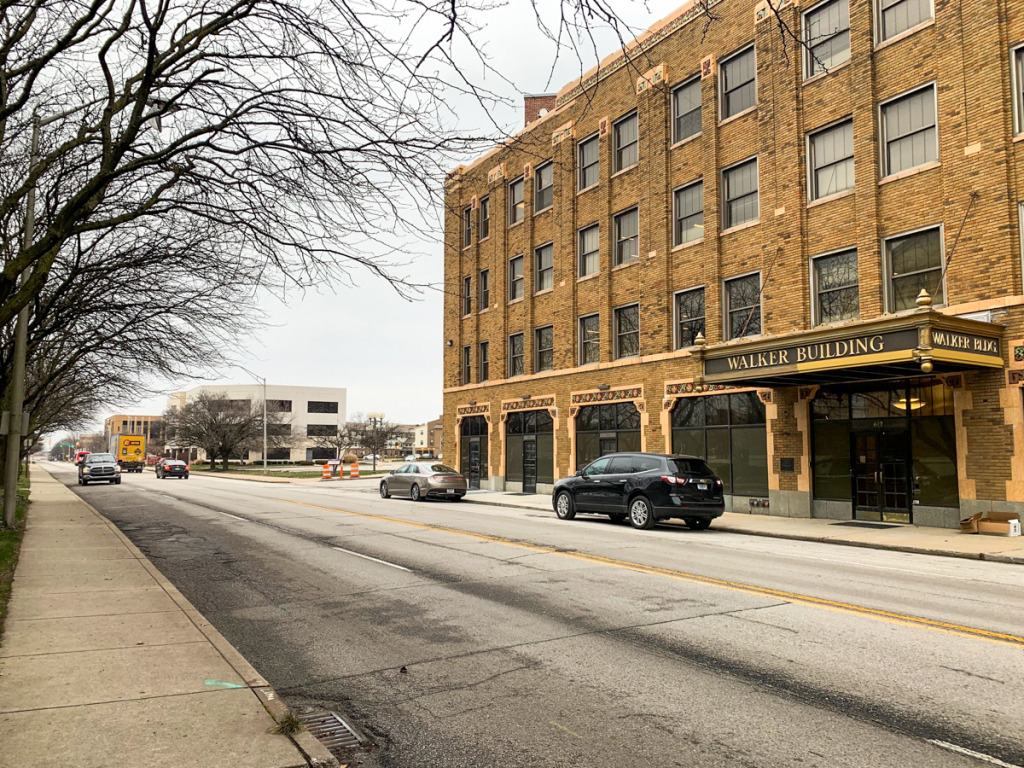Subscriber Benefit
As a subscriber you can listen to articles at work, in the car, or while you work out. Subscribe NowIndianapolis officials are asking for ideas about the future of of Indiana Avenue, with a focus on finding concepts that honor the history of the corridor.
The Department of Metropolitan Development on Thursday issued a request for expressed interest, or RFEI, which officials hope will help them move ahead with devising an overall plan for the Indiana Avenue neighborhood.
The RFEI, a precursor to a more formal request for proposals process, will focus on an area generally bounded by 16th Street to the north, Capitol Avenue to the east, Military Park to the south and the White River to the west. It will include four neighborhoods (Ransom Place, Fayatte Street, Flanner House Homes, and Watermark).
“Our goal as a city is to lay the foundation for a more equitable and prosperous Indiana Avenue,” Indianapolis Mayor Joe Hogsett said in written remarks. “We’re working alongside a unified front of residents, descendants, caretakers, and developers of Indiana Avenue to align our visions to chart a new course for one of our most sacred corridors. We welcome proposals from anyone who carries a love for their community and a dream for a brighter future for the Avenue.”
The city is partnering with local-based entities Reclaim Indiana Avenue and the Urban Legacy Lands Initiative to seek proposals from design and planning firms that will result in a new certified strategic plan for Indiana Avenue. The RFEI is the first step in the development of such a plan, which is expected to incorporate input from nearby residents, business owners and other community members.
The city is asking prospective consultants to be able to meet certain minimum requirements: They entail the ability to establish a vision and goals for the project; review and collect data and historical information about the neighborhood; equitable community engagement; the ability to assess current conditions; and develop recommendations for future uses.
While the certified plan won’t be folded into the city’s more rigorous comprehensive plan, the findings will still be recognized by DMD and considered by all governing bodies before final decisions are made on future land use, economic development projects and public investments.
The move comes more than two years after local developer Buckingham Cos. scrapped plans to build a $70 million market-rate apartment project at 719 Indiana Avenue—a property owned by the Walker Center—following extensive pushback from nearby residents.
The project called for 350 apartments, a substantial parking garage and thousands of square feet of first-floor retail space. It faced significant opposition from the property’s neighbors, including the historically Black Ransom Place Historic District, a block north of the Walker Center, and the fledgling Reclaim Indiana Avenue.
Responses to the RFEI are due to the city by April 27.
At the Kurt Vonnegut Museum Library on Indiana Avenue on Thursday, Reclaim Indiana Avenue leader Paula Brooks told attendees about her experience growing up in the neighborhood. She left for Howard University and when she returned, her neighborhood had been moved to the other side of the White River, she said.
“Our schools were gone, our recreational spaces were gone, our performance spaces were gone,” Brooks said. “And all the neighborhood amenities that make this such a wonderful community to grow up in, they were all gone.”
Hogsett acknowledged a history in which the city, the Statehouse, forced segregation and predatory bank loans battered the neighborhood and prevented growth. He also cited the division of communities by the interstate, parking lots and campus facilities that “ate up real estate.”
The mayor did not mention the campus, IUPUI, by name. But Brooks did, saying she has a “love-hate relationship” with the college and hopes that the new leadership under IU Indianapolis will forge a new path for the college and Indiana Avenue communities.
“My hope for IUPUI… is that with this leadership in place, that they will finally become a true part of our community and will want to work toward respecting the residential nature of the neighborhood, rather than seeing our neighborhood as an extension of the school,” Brooks said.
Please enable JavaScript to view this content.


Do it right!
Yes it should definitely be done with emphasis to its historical roots. I would suggest an upscale vegan soul food restaurant with live jazz. Sort of like yhe Jazz kitchen on college Ave. there should also be a museum with things about the area and other black history across the city. Don’t go basic with this but BIG and make a statement that has people from all over the country wanting to visit this location.
Plenty of Everything!!! Numerous options from housing, 24 hr entertainment, education, shopping, apartments,condos,hotels etc…jazz clubs,hip hop, comedy clubs,live music,spots for local and national artists and stuff like that to make money!!! While making current history!! Bigger,better, never backwards!!!!
So, the desire to develop based on one segment of our society will fail, as it always does. Develop with the goal of involving our entire diverse society is the only way this project will survive. Sorry for injecting truth into rhetoric.
You’re the only one stating the real truth here. The other KevinP remains idealistic and Nashville Micah is always the gogo guy!